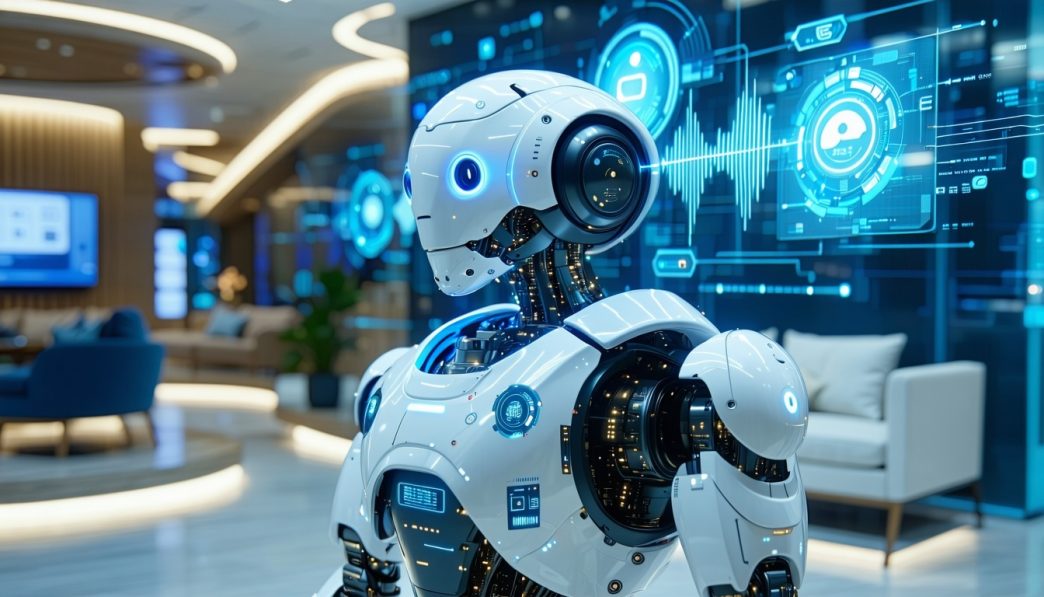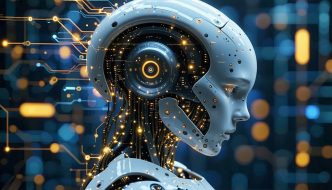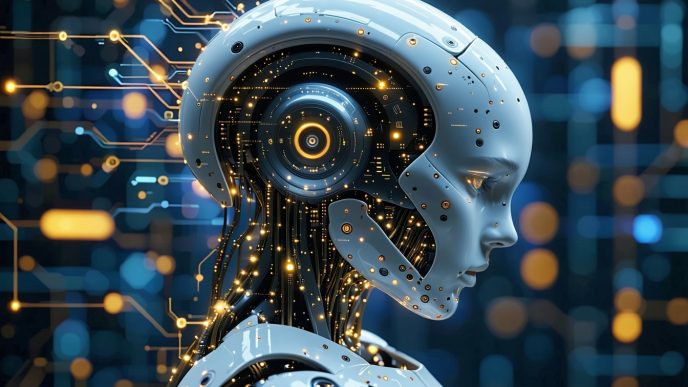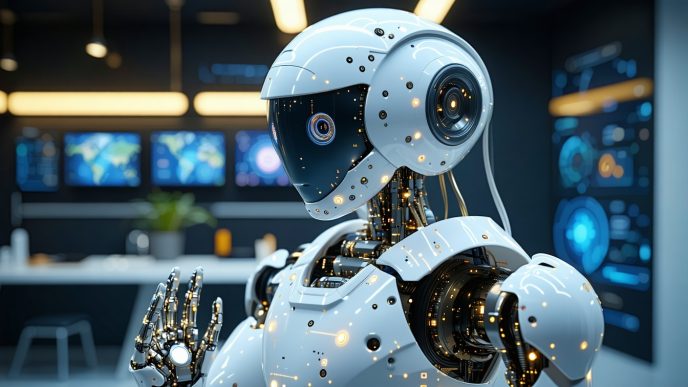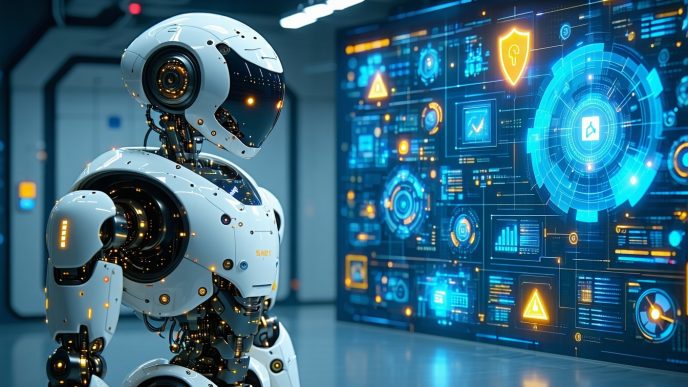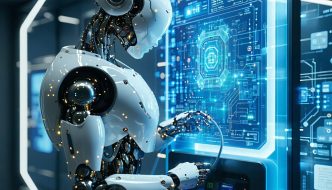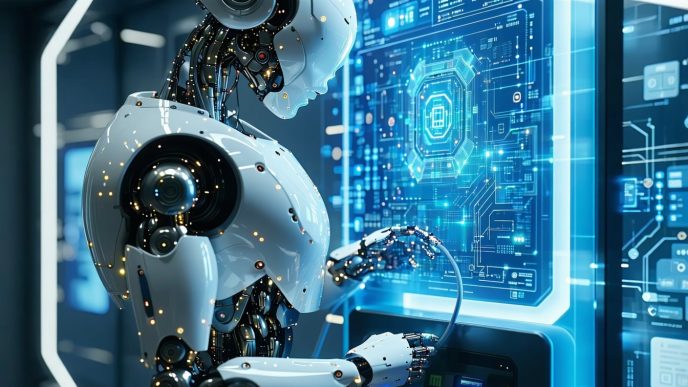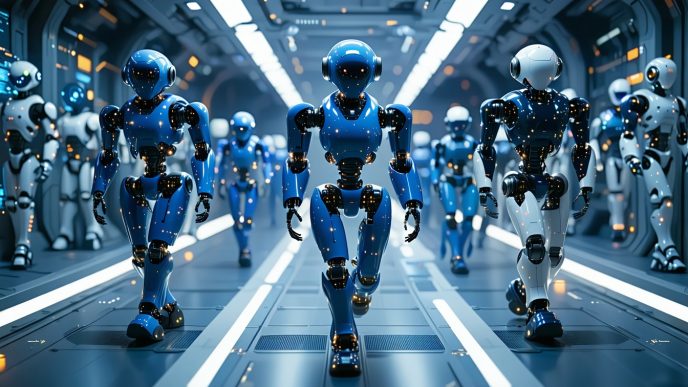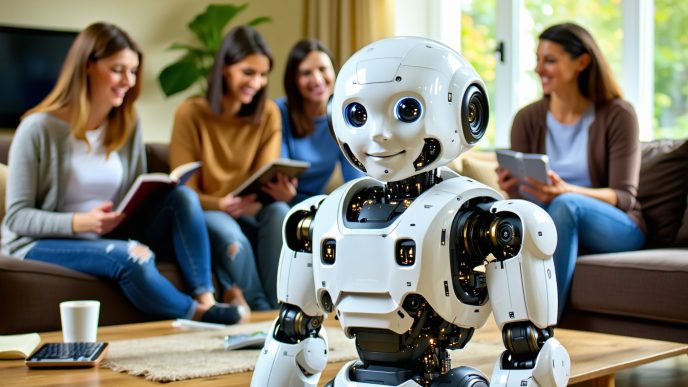Evolution of Humanoid Robots
Introduction to Humanoid Robots
Humanoid robots are designed to resemble human form and behavior, making them capable of interacting with people in a more relatable manner. These robots are increasingly being integrated into various sectors, including healthcare, education, and home assistance. As they evolve, the focus has shifted toward enhancing their ability to understand and respond to human interactions effectively.
Advancements in Humanoid Robot Technology
Over the years, significant advancements in technology have driven the evolution of humanoid robots. Innovations such as improved sensors, artificial intelligence, and more sophisticated motors have enabled these machines to perform complex tasks with greater autonomy and dexterity. This progression has led to enhanced versions of popular models like the Tesla Optimus robot and the Sanctuary AI Phoenix, showcasing cutting-edge capabilities in human interaction and movement.
The following table summarizes key technological advancements in humanoid robots from the last decade:
| Year | Technology | Description |
|---|---|---|
| 2015 | Basic Interaction | Initial models focused on simple tasks and interactions. |
| 2018 | Enhanced Movement | Introduction of advanced locomotion systems, enabling more human-like movement. |
| 2020 | AI Integration | Implementation of deep learning models, improving decision-making in interactions. |
| 2023 | Voice Interfaces | Development of complex voice interfaces in humanoid robots that enhance communication skills. |
Role of Voice Interfaces
Voice interfaces play a crucial role in the functionality of humanoid robots. These interfaces allow robots to process and understand human speech, facilitating natural conversations. By employing advanced natural language processing (NLP) techniques, humanoid robots can interpret context, tone, and intent, resulting in more effective interactions.
Key benefits of voice interfaces include:
- Enhanced user experience through intuitive communication
- The ability to issue commands easily without manual input
- Potential applications in various fields, including humanoid robots for elder care and humanoid robots for education
By integrating voice technology, humanoid robots are becoming more adept at understanding and responding to human emotions and needs, further closing the gap between humans and machines. As this technology continues to advance, it promises to reshape how humans interact with robots in everyday life.
Importance of Understanding Human Interactions
In the realm of humanoid robots, comprehending human interactions is essential for effective communication and functionality. As robots become more integrated into daily life, their ability to mimic and understand human responses greatly influences their success in various applications.
Why Understanding Humans is Crucial
Understanding human behavior allows humanoid robots to perform effectively in settings such as healthcare, education, and home assistance. By grasping tone, context, and emotional cues in conversations, these robots can respond in a manner similar to humans, enhancing user experience.
| Aspect | Importance |
|---|---|
| Communication | Facilitates meaningful dialogue |
| Emotional Connection | Builds trust with users |
| Task Efficiency | Improves assistance in daily activities |
Humanoid robots can assist in tasks like elderly care or companionship when they effectively understand user needs and emotions. For further information on such applications, please refer to our article on humanoid robots in elder care.
Challenges in Human-Robot Interaction
While the importance of understanding human interactions is clear, several challenges remain in achieving effective communication between humans and robots. These challenges arise from the complex nature of human language and emotion.
| Challenge | Description |
|---|---|
| Ambiguity | Humans often use phrases that can have multiple meanings, which can confuse robots. |
| Cultural Differences | Variances in language and social norms can impede understanding. |
| Context Sensitivity | Robots may struggle to interpret context-specific references without clear cues. |
Additionally, the development of robust voice interfaces in humanoid robots is critical to overcoming these challenges. Implementing advanced natural language processing capabilities can enhance the robot’s ability to interact seamlessly, addressing obstacles faced during communication. To explore how voice interfaces function and their benefits, see our sections on voice interfaces in humanoid robots.
Using Voice Interfaces in Humanoid Robots
Voice interfaces play a crucial role in how humanoid robots interact with humans. They enable communication and understanding, allowing robots to respond to verbal commands and engage meaningfully with users.
How Voice Interfaces Work
Voice interfaces utilize advanced technologies to recognize and process human speech. They typically operate through several key components:
- Microphones: Capture sound and convert it into digital signals.
- Speech Recognition Software: Transforms spoken language into text, allowing the robot to understand commands and queries.
- Natural Language Processing (NLP): Analyzes the text to determine the intent behind the words and generate appropriate responses.
- Speech Synthesis: Converts text responses back into audible speech so the robot can reply.
The combination of these elements allows humanoid robots to interpret user input, manage commands, and engage in conversation effectively.
| Component | Purpose |
|---|---|
| Microphones | Captures sound |
| Speech Recognition | Converts speech to text |
| Natural Language Processing | Understands context and intent |
| Speech Synthesis | Produces spoken responses |
Benefits of Voice Interfaces
The integration of voice interfaces in humanoid robots provides several advantages, enhancing their functionality and user experience:
- Ease of Use: Voice commands simplify interactions, eliminating the need for complex controls or interfaces.
- Accessibility: Individuals with disabilities can engage with robots more easily through voice rather than manual inputs.
- Multitasking: Users can issue commands while performing other tasks, boosting overall efficiency.
- Natural Interaction: Human-like conversation improves engagement and comfort levels when interacting with robots.
- Adaptability: Voice interfaces can learn and adapt to an individual’s speech patterns and preferences, making interactions more personal.
By employing voice interfaces, humanoid robots significantly improve their ability to communicate and assist humans in various tasks, making them valuable companions in settings like homes, workplaces, and healthcare facilities. For further insights, explore articles on humanoid robots for home use and humanoid robots in healthcare.
Development of Natural Language Processing
Natural Language Processing (NLP) plays a vital role in enhancing the interaction between humanoid robots and humans. The development of NLP technology has significantly improved these robots’ abilities to understand human language and context, making communication more effective.
Improving Understanding of Context
Understanding context is crucial for effective communication. Humanoid robots equipped with advanced NLP algorithms can interpret not just the spoken words but also the intent and nuances underlying those words. This understanding is facilitated by analyzing various factors such as tone, volume, and speech patterns.
Here are some key aspects that demonstrate how context is improved through NLP:
| Contextual Aspect | Description |
|---|---|
| Tone of Voice | Changes in pitch can indicate emotions. |
| Volume | A speaker’s loudness can signify urgency or anger. |
| Speech Patterns | Repeated phrases or hesitations can reveal uncertainty. |
| Environmental Factors | The setting can affect the interpretation of words (e.g., a quiet room vs. a busy street). |
The more adept a humanoid robot becomes at grasping context, the more natural and intuitive their interactions will be with people.
Enhancing Interaction Efficiency
Enhancing the efficiency of interactions involves minimizing misunderstandings and improving response times. NLP contributes to this by enabling humanoid robots to process and respond to speech quickly. With faster processing capabilities, robots can engage in smoother conversations, making the experience feel more organic for users.
Some benefits of improved interaction efficiency include:
| Benefit | Impact |
|---|---|
| Faster Response Times | Reduces the lag between question and answer, making dialog more fluid. |
| Reduced Miscommunication | Helps to ensure that the robot understands queries accurately, leading to fewer clarifications needed. |
| Increased Engagement | Enhances user satisfaction as conversations flow better, encouraging more frequent use. |
Through the integration of NLP, humanoid robots can facilitate communication that feels more human-like. The ongoing advancements in this technology are crucial for developing more interactive and capable robots, which can be seen in various applications from humanoid robots for home use to humanoid robots in healthcare.
Emotional Intelligence in Robots
Humanoid robots are increasingly being designed with emotional intelligence, allowing them to interact more effectively with humans. This section will explore how these robots recognize emotions in human speech and respond appropriately to emotional cues.
Recognizing Emotions in Human Speech
The ability of robots to recognize emotions in human speech relies on advanced techniques in speech recognition and analysis. By utilizing algorithms that can analyze tone, pitch, and speech patterns, humanoid robots can identify different emotional states.
Some key components in emotion recognition include:
| Aspect | Description |
|---|---|
| Tone of Voice | Detects variations in pitch and volume that indicate emotions. |
| Speech Patterns | Analyzes speed and rhythm of speech to infer feelings. |
| Contextual Understanding | Utilizes natural language processing to better understand the context in which emotions are expressed. |
These systems help robots identify whether a person is happy, sad, angry, or stressed, enhancing the effectiveness of their responses. For more on this technology, see our article on emotion recognition in robots.
Responding Appropriately to Emotional Cues
Once a humanoid robot recognizes emotions in human speech, it must respond in a way that is sensitive to those feelings. Appropriate responses can include:
| Response Type | Example |
|---|---|
| Empathetic Responses | Acknowledging the user’s feelings, such as saying, “I understand that you are upset.” |
| Supportive Actions | Offering assistance or suggesting solutions, such as, “Is there anything I can do to help you feel better?” |
| Positive Reinforcement | Celebrating positive emotions by recognizing accomplishments, like saying, “That’s wonderful news!” |
By using voice interfaces in humanoid robots, these emotional interactions become more seamless and natural. An advanced voice interface enables the robot to express empathy effectively, creating a more engaging user experience.
This layer of emotional intelligence is vital in various applications, including humanoid robots in healthcare and humanoid robots for companionship. Such interactions foster stronger connections between humans and robots, making these advanced systems more integrated into everyday life.
Overcoming Communication Barriers
Humanoid robots are increasingly equipped with advanced technology that helps overcome communication barriers, enhancing their ability to interact with humans seamlessly. Two key features in this area are language translation capabilities and multi-modal communication features.
Language Translation Capabilities
Language translation capabilities in humanoid robots play a pivotal role in allowing them to communicate with people from diverse linguistic backgrounds. By integrating powerful translation algorithms, these robots can understand and convey messages in multiple languages, making them versatile communicators.
The effectiveness of language translation can vary based on several factors. The following table outlines some common features associated with language translation in humanoid robots.
| Feature | Description |
|---|---|
| Supported Languages | Number of languages the robot can translate |
| Speed of Translation | Average time taken to translate a phrase |
| Accuracy Rate | Percentage of correct translations |
| Language Pairing | Combinations of languages supported |
For example, a robot that supports ten languages and has an accuracy rate of 95% will be more effective in multilingual scenarios than others. Such capabilities are especially beneficial in environments like humanoid robots for healthcare and humanoid robots for education, where clear communication is essential.
Multi-Modal Communication Features
Multi-modal communication features enhance the interaction between humanoid robots and humans by utilizing various forms of communication, such as voice, facial expressions, and body language. This approach allows robots to convey and receive information more effectively.
The following table highlights some common multi-modal communication features in humanoid robots.
| Feature | Description |
|---|---|
| Voice Recognition | Ability to understand spoken commands |
| Gesture Recognition | Recognition of human gestures and movements |
| Facial Expression Detection | Ability to read and respond to human emotions |
| Visual Feedback | Use of screens or lights to convey messages |
These features work together to create a more engaging experience for users. For instance, a robot that can understand spoken commands, recognize gestures, and display appropriate facial expressions can significantly enhance user interaction. This is crucial in settings like humanoid robots for home use and humanoid robots for companionship.
By incorporating language translation and multi-modal communication capabilities, humanoid robots can effectively bridge the gap between human and machine communication. This integration marks a significant step forward in the evolution of voice interfaces in humanoid robots.
Future Prospects
As the field of humanoid robotics advances, the integration of artificial intelligence (AI) and machine learning is set to revolutionize voice interfaces in humanoid robots. These technologies enhance the ability of robots to process human language, understand context, and respond effectively to user interactions.
Integration of AI and Machine Learning
The incorporation of AI algorithms allows humanoid robots to learn from interactions and improve their responses over time. Machine learning enables these robots to analyze vast amounts of data, identifying patterns in human speech and behavior. As they gain experience, their ability to interpret nuances in communication enhances significantly.
| Technology | Key Features |
|---|---|
| AI Integration | Allows robots to learn from user interactions |
| Machine Learning | Analyzes speech patterns for improved understanding |
| Contextual Awareness | Enhances responses based on user input history |
This development not only improves the interaction quality but also creates a more intuitive experience for users, leading to greater acceptance of humanoid robots in daily life.
Potential Applications of Advanced Voice Interfaces
The advancements in voice interfaces deliver a range of potential applications across various domains. With improved speech recognition and understanding, humanoid robots can be utilized effectively in settings such as healthcare, education, and home assistance.
| Application Area | Description |
|---|---|
| Healthcare | Assistance with patient care and monitoring |
| Education | Personalized tutoring and support for students |
| Home Assistance | Help with daily chores and tasks |
By focusing on these applications, humanoid robots can significantly contribute to improving the quality of life and efficiency in various environments. For example, robots in healthcare can assist with routine checks while providing companionship to patients. The potential for sophisticated voice interfaces to enhance daily interactions with humanoid robots is immense, paving the way for an evolving future in robotics. For more insights, explore our article on humanoid robots for home use.

